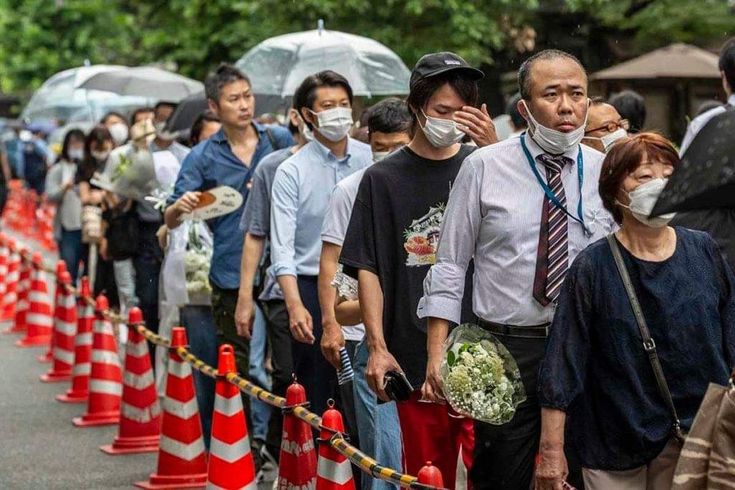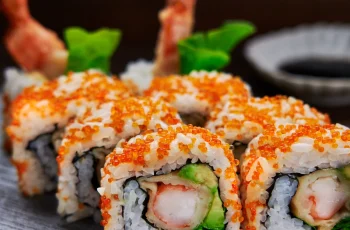Step off the plane in Japan, and the first thing you notice isn’t the architecture or the language. It’s the air. There’s a different quality to it, a palpable sense of order, a hum of quiet energy that feels fundamentally distinct from anywhere else on Earth. It’s a sensation that deepens with every passing hour. A trip to Japan isn’t merely a vacation; it’s a journey into an alternate reality, a place that operates on a social and cultural software so unique it can feel like you’ve traveled to another planet.
Many countries are “different,” but Japan is different on a systemic level. It’s a place where ancient traditions aren’t just preserved in museums but are lived out daily alongside mind-bending futuristic technology. It’s a society that juggles profound seriousness with a whimsical love for the absurdly cute. This isn’t just a collection of quirks; it’s a cohesive, interwoven tapestry of values and behaviors that consistently leave visitors in a state of bewildered awe. But what, exactly, are the source codes for this “otherworldly” feeling? Why does a nation of 125 million people feel so shockingly different?
The answer lies in a series of deep-rooted cultural pillars that, when combined, create an experience that is as challenging to explain as it is unforgettable to live. Let’s peel back the layers and explore the core reasons why Japan feels like a beautifully crafted world unto itself.
1. The Silent Symphony: The Power of Social Harmony (和, Wa)

The first cultural shock for many visitors, especially those from bustling Western cities, is the quiet. Board a subway train in Tokyo during rush hour, and you’ll find it packed to capacity, yet eerily silent. There are no loud phone conversations, no boisterous chats between friends, no music blaring from headphones. This isn’t because of a strict rule; it’s the manifestation of one of Japan’s most crucial cultural concepts: Wa (和), which translates to harmony and peace.
Wa is the societal belief that the group’s well-being is more important than individual expression. This isn’t about suppressing oneself but about showing consideration for others in a shared space. It dictates a thousand subtle behaviors. People line up in perfectly orderly queues for everything—from a bus to a ramen shop with only three seats. There is no honking in traffic jams. Public displays of anger are virtually non-existent.
This collective consideration creates a low-friction society that feels impossibly smooth. The absence of ambient social noise and conflict is profoundly calming and, frankly, bizarre to an outsider. You begin to notice your own loudness, your own comparatively clumsy navigation of public space. In Japan, society moves like a silent, choreographed ballet, and you are the guest performer who doesn’t yet know the steps. This pervasive, unspoken social contract is the foundational layer of Japan’s alien feel. It’s a world where consideration is the default setting.
2. The Paradox of Time: Where the Ancient and the Futuristic Collide

Nowhere on Earth is the juxtaposition of past and future more vivid and less jarring than in Japan. It’s a living time machine. You can be walking through Kyoto’s Gion district, where a geisha in a priceless silk kimono shuffles down a cobblestone lane, only to see her pull out the latest iPhone to check her schedule. You can stand before a 1,000-year-old Shinto shrine, a bastion of serene spirituality, and in the background, a sleek Shinkansen (bullet train) will silently glide past at 200 mph.
This isn’t a culture in transition; it’s a culture in a state of permanent, harmonious duality. The two extremes don’t clash; they coexist. Technology is not seen as a threat to tradition but as a tool to enhance life within a traditional framework.
Consider the toilets. Japanese toilets are a famous example, often featuring heated seats, bidet functions with adjustable pressures and temperatures, air dryers, and even sound-masking features to ensure privacy. It’s a piece of hyper-advanced technology dedicated to one of life’s most basic functions. Yet, in the same building, you might find a tokonoma, an alcove for displaying a single piece of calligraphy or a seasonal flower arrangement, an aesthetic practice hundreds of years old. This seamless integration of the hyper-modern into the deeply traditional makes the entire environment feel like a work of thoughtful science fiction, a world that has mastered its technological evolution without abandoning its soul.
3. Kodawari: The National Obsession with Perfection and Detail
Why does a simple sandwich from a 7-Eleven in Japan taste better than many café sandwiches elsewhere? Why is a gift you purchase wrapped with such geometric precision it feels a crime to open it? The answer is kodawari (こだわり), a concept with no perfect English equivalent, but which can be described as a relentless, passionate pursuit of perfection in one’s craft, no matter how small.
Kodawari is everywhere. It’s in the ramen chef who has dedicated 30 years to perfecting a single broth. It’s in the train driver who apologizes over the intercom if the train is 30 seconds late. It’s in the bartender who carves a perfect sphere of ice by hand because it melts slower and chills a whiskey more evenly. It’s in the immaculately clean streets, where even construction sites are pristine and workers bow to passing traffic.
This dedication to detail elevates the mundane to an art form. Every transaction, every meal, every interaction is imbued with a level of care and intention that is simply absent in most other places. For a visitor, this is both a delight and a shock. You receive service that feels like you’re royalty, even when just buying a coffee. You eat food prepared with an almost spiritual reverence. This culture of excellence creates an environment of such high quality that it feels surreal. It’s a world where everyone takes immense pride in their work, and the cumulative effect is a society that functions with breathtaking precision and beauty.
4. A Universe in Vending Machines and Convenience Stores (Konbini)
If you want a tangible, 24/7 gateway into the Japanese psyche, look no further than its vending machines and convenience stores (konbini). They are not just places for a quick snack; they are pillars of Japanese life and marvels of efficiency that feel like they belong in the year 2050.
Japan has over five million vending machines, one for roughly every 25 people. They sell the expected—drinks and snacks—but also the utterly unexpected. You can find vending machines dispensing hot meals like ramen and fried chicken, fresh eggs, surgical masks, umbrellas, T-shirts, bouquets of flowers, and even traditional dashi soup stock. They are reliable, always working, and a testament to a high-trust society where vandalism is a non-issue.
The konbini (like 7-Eleven, FamilyMart, and Lawson) are even more impressive. They are clean, bright oases that offer an astonishing array of high-quality goods and services. You can buy delicious, restaurant-quality meals like katsu curry and soba noodles. You can pay your utility bills, buy concert tickets, send and receive packages, print documents, and use a pristine-clean restroom, no questions asked. The food is not the sad, cellophane-wrapped fare of Western convenience stores. The onigiri (rice balls) are made fresh daily, the sandwiches are fluffy and flavorful, and the selection of sweets and drinks is dazzling. The konbini is a microcosm of Japan itself: efficient, high-quality, considerate, and catering to every conceivable need with meticulous care.
5. Spirituality Woven into Daily Life
While Japan is one of the world’s least religious countries in terms of formal affiliation, spirituality is woven into the very fabric of its culture. The native Shinto religion and imported Buddhism are not so much a set of dogmatic beliefs as they are a collection of rituals and traditions that mark the passage of time and bring good fortune.
This is visible everywhere. A new business will have a Shinto priest bless its office. People will visit a shrine at New Year’s to pray for a good year. Before a big exam, students will buy an omamori (a small amulet) for academic success. In homes, you’ll find small Buddhist altars (butsudan) to honor ancestors alongside miniature Shinto shrines (kamidana) for household gods.
These practices are not seen as deeply religious acts but as a natural part of life, like celebrating a birthday. This casual, integrated spirituality means that serene, sacred spaces are scattered throughout the most bustling urban landscapes. You can turn a corner in the neon-drenched district of Shinjuku and find a tiny, quiet shrine nestled between two skyscrapers, offering a moment of peace. This constant, easy access to the sacred and the ancient in the middle of the modern world adds a layer of profound depth and mystery to the Japanese experience.
6. The Omnipresence of Kawaii (Cute Culture)

To the uninitiated, Japan’s obsession with “cute” (kawaii, かわいい) can be baffling. It’s not just Hello Kitty and Pokémon. Kawaii culture permeates every level of society with a sincerity that is shocking. Banks use adorable animal mascots. Police forces have cute characters to promote public safety. Construction sites feature fences with smiling cartoon rabbits apologizing for the inconvenience. Even serious government health warnings are often delivered by a cheerful, round-faced mascot.
In the West, cuteness is often relegated to childhood. In Japan, it’s a legitimate aesthetic and a powerful form of communication. Kawaii is used to make intimidating things (like government bureaucracy or complex machinery) seem more approachable and friendly. It’s a social lubricant, a way to express vulnerability, and a massive economic driver.
This aesthetic choice creates a visual landscape that is utterly unique. The world is softened, anthropomorphized, and made less threatening. The juxtaposition of Japan’s formal, rigid social structure with this pervasive, almost childish whimsy is a core part of its “otherworldly” feel. It’s a society that is simultaneously deeply serious and playfully lighthearted, a paradox that makes perfect sense within its own context but is startling from the outside.
7. Safety and Trust: The Lost Wallet Phenomenon
Perhaps the most mind-altering aspect of Japan for any visitor is the staggering level of public safety and social trust. This is best illustrated by the “lost wallet” test. If you lose your wallet in a major city like Tokyo, full of cash and credit cards, the chances are overwhelmingly high that it will be returned to you, completely untouched. This isn’t a myth; it’s a common experience.
This culture of honesty is ubiquitous. You will see people “reserving” a table at a packed Starbucks by leaving their brand-new MacBook and phone on the table while they go to order. Children as young as six or seven commute to school alone on crowded public transport systems, a sight that would be unthinkable in most other developed nations. Bags are left unattended, bicycles are often left unlocked, and there is a general, unspoken assumption that people will not steal or cause harm.
Living in this high-trust environment, even for a short time, rewires your brain. The constant, low-level vigilance that many of us carry through life simply evaporates. The relief is immense, but so is the shock. It forces you to question the social norms you’ve always taken for granted and wonder how a society of millions achieved such a state of collective integrity. It feels less like a country and more like a well-run, utopian community.
8. The Culinary Odyssey: A Ritual on a Plate
Food in Japan is not just sustenance; it is an art form, a cultural heritage, and a regional obsession. The sheer depth and diversity of Japanese cuisine go far beyond the sushi and ramen known globally. Every region, every city, and sometimes every small town has its own culinary specialty (meibutsu) that it is fiercely proud of.
What makes it feel like another world is the ritual and specialization. A meal is not just about taste, but about seasonality, presentation, and balance. A traditional kaiseki meal is a multi-course symphony of small, exquisitely prepared dishes that reflect the current season through their ingredients and even the color of the ceramics they are served on.
Furthermore, the concept of the shokunin, or artisan master, is central to Japanese food culture. Many chefs dedicate their entire lives to mastering a single dish—be it tempura, unagi (eel), or soba noodles. Their dedication is a form of kodawari that results in a transcendent culinary experience. You’re not just eating food; you’re consuming the product of a lifetime of focused passion. This reverence for food, from the humble rice ball in a konbini to a three-Michelin-star meal, makes every dining experience feel significant and special.
Conclusion: A Different Operating System
Japan feels like another world because it is, in a sense, running on a different societal operating system. The core values—harmony (Wa), dedication to perfection (Kodawari), and a deep respect for tradition, nature, and one another—inform every aspect of life, from the way people queue for a train to the way a piece of fish is sliced.
It is the amalgamation of all these elements that creates the profound sense of otherness. It’s the silence on the train, the futuristic toilet in a traditional inn, the impossibly perfect bento box, the cute mascot on a tax form, the lost phone returned by a stranger, and the serene shrine nestled in a forest of skyscrapers. No single element is the sole reason; it is their constant, overlapping, and harmonious interplay that generates the feeling of having stepped through a portal.

